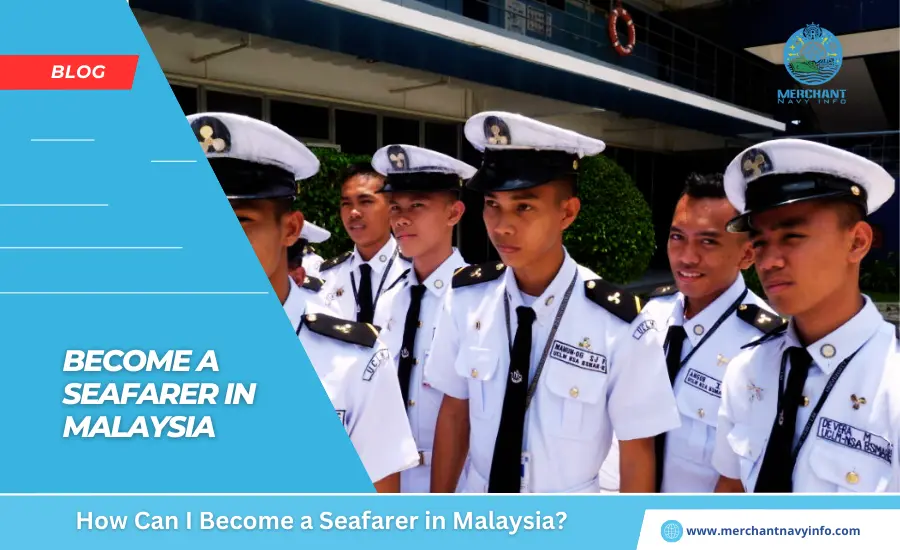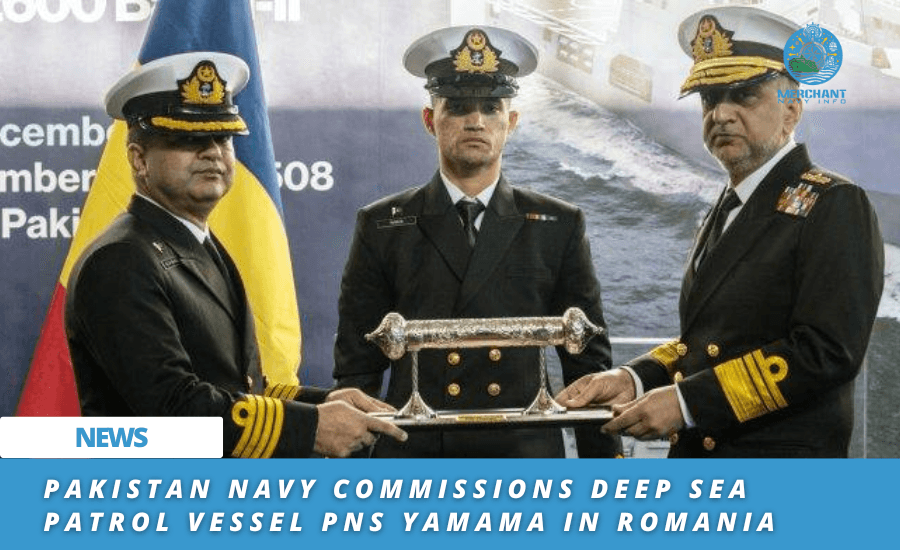
Setting out on a career as a seafarer offers the opportunity for enterprise, investigation, and proficient development. In Malaysia, with its wealthy oceanic legacy and vital area. Trying seafarers has gotten to a wide extent of preparing programs and career pathways. This nitty-gritty directly diagrams the steps and necessities for seeking a career as a seafarer in Malaysia. From getting the vital capabilities to finding business openings within the oceanic industry. Learn about maritime courses in Malaysia.
Get the Necessities
Understanding the necessities to be a seafarer in Malaysia is basic for yearning people. To set out on a fruitful career within the sea industry. Here’s a point-by-point breakdown of the key necessities:
1. Age Prerequisite
- To enlist in sea training programs and get pertinent certifications. People ordinarily ought to be at least 17 or 18 a long time ancient, depending on the particular program or certification necessities.
- A few higher-level certifications, such as officer-level certificates of competency (COC), may have the least age prerequisites extending from 18 to 21 a long time ancient.
2. Wellbeing and Therapeutic Wellness
Marine is physically requesting, and people must meet certain well-being and restorative guidelines. To guarantee they can perform their obligations securely and successfully.
Whereas, trying seafarers are required to experience restorative examinations conducted by certified oceanic restorative professionals. To survey their physical wellness and appropriateness for work at the ocean.
The restorative examination regularly incorporates appraisals of vision, hearing, cardiovascular well-being, and respiratory work. And by and large physical wellness. Learn about maritime courses in Malaysia.
3. Instructive Capabilities
While there are no particular scholastic necessities to get to be a seafarer. People ordinarily ought to have completed at least an auxiliary instruction or its equivalent.
A few sea-reparing programs and certifications may have particular scholarly prerequisites. Such as the least number of credits in pertinent subjects like arithmetic, material science, and English.
People with higher levels of instruction, such as a recognition or degree in oceanic ponders or related areas. May have an advantage in seeking after-progressed certifications and career openings within the oceanic industry.
4. Dialect Proficiency
Capability within the English dialect is fundamental for communication within the international oceanic industry, as English is the essential dialect utilized for route, communication, and also documentation.
Trying seafarers may got to illustrate capability in English through standardized dialect capability tests, such as the Worldwide English Dialect Testing Framework (IELTS) or the Test of English as a Remote Dialect (TOEFL).learn about maritime courses in Malaysia.
5. Lawful Necessities
People seeking a career as a seafarer in Malaysia must comply with significant lawful necessities and controls administering oceanic preparation, certification, and business.
This incorporates getting essential visas, work grants, and supports from the Malaysian Oceanic Specialist (MMA) or other pertinent administrative bodies.
Furthermore, individuals must follow to worldwide oceanic traditions and measures, such as those set forward by the Universal Oceanic Organization (IMO) and the Guidelines of Preparing, Certification, and Watchkeeping for Seafarers (STCW) Tradition.
Get Essential Certifications
Getting essential certifications could be a pivotal step for people yearning to become seafarers in Malaysia. These certifications give the foundational information and skills necessary to work securely and also viably in the maritime industry. Here’s a detailed outline of the essential certifications required:
1. Basic Security Preparing (BST)
Essential Security Preparation may be an obligatory certification for all seafarers and covers fundamental security strategies and hones.
The BST course regularly incorporates modules on Individual Survival Methods (PST), Fire Anticipation and Firefighting (FPFF), Basic To Begin with Help (EFA), and Individual Security and Social Duties (PSSR).
Moreover, PST covers survival procedures within the occasion of dispatch surrender, including wearing a lifejacket, boarding a life pontoon, and essential ocean survival aptitudes.
2. Capability in Survival Create and Rescue Boats (PSCRB)
PSCRB may be a specialized certification that gives preparing in propelling, working, and recuperating survival craft and protecting pontoons.
The course covers procedures for launching and maneuvering rafts and protecting vessels, as well as strategies for recuperating survivors from the water.PSCRB preparation emphasizes commonsense works out, counting propelling and maneuvering rafts in simulated emergency scenarios, conducting drills, and utilizing protective hardware viably.
3. Therapeutic To begin with Help (MFA)
Therapeutic To begin with Help certification gives seafarers with essential preparing in to begin with help methods and therapeutic care onboard a vessel. The MFA course covers surveying and treating common wounds and medical conditions, regulating cardiopulmonary revival (CPR), and giving introductory restorative care until proficient therapeutic help is accessible. Preparing incorporates commonsense works out and reenactments to plan seafarers to reply effectively to therapeutic crises onboard a dispatch.
4. Individual Survival Procedures (PST)
Individual Survival Procedures certification centers particularly on survival abilities and methods for seafarers in crisis circumstances.
PST preparing covers wearing and utilizing individual defensive gear (PPE), entering the water securely, and receiving survival positions to moderate vitality and keep up buoyancy. Whereas practical exercises include lifejacket drills, simulated abandon dispatch strategies, and ocean survival scenarios to ensure seafarers are arranged to reply effectively in crises.
Enlist in Oceanic Training Programs
Enlisting in sea preparation programs is an urgent step for people aspiring to become seafarers in Malaysia. These programs give comprehensive instruction and viable preparing in different aspects of oceanic operations, security, and routes. Here’s a nitty gritty diagram of enlisting in oceanic preparing programs:
1. Investigate and Select Authorize Educate
Start by inquiring about licensed oceanic preparing education in Malaysia that offers comprehensive and recognized training programs endorsed by the Malaysian Oceanic Specialist (MMA) or other pertinent administrative bodies. Explore for teaching with a reputation for high-quality preparation, experienced instructors, modern offices, and up-to-date preparation gear.
2. Select the Suitable Course
Distinguish the specific maritime preparing courses that adjust together with your career objectives and yearnings. Common courses may incorporate Deck Officer Cadet Preparing, Marine Building, Route, Seamanship, Oceanic Law, and Marine Electrical Frameworks, among others. Consider your interests, qualities, and career objectives when selecting courses to guarantee they give relevant knowledge and aptitudes for your craved marine career way.
3. Check Affirmation Necessities
Audit the admission necessities for each preparing program to guarantee you meet the eligibility criteria. Necessities may incorporate minimum educational qualifications, age limits, therapeutic wellness benchmarks, and dialect capability necessities (e.g., English dialect capability).
A few preparation programs may also require candidates to experience fitness tests, interviews, or therapeutic examinations as portion of the confirmation prepare.
4. Yield Application and Required Records
Total the application handle for your chosen oceanic preparing program by submitting the specified application shapes, supporting reports, and application expenses, in case appropriate. Commonplace reports required for enrollment may include scholarly transcripts, certificates of completion for fundamental certifications (e.g., BST, PSCRB, MFA), therapeutic examination reports, identification documents, and confirmation of dialect capability.
5. Go to Preparing Sessions and Practical Exercises
Once enrolled, go to preparing sessions conducted by experienced educators who are specialists in their particular fields. Take part in hypothetical classroom sessions, viable works out, recreations, and hands-on preparation exercises to secure the fundamental information and abilities in oceanic operations, safety procedures, navigation techniques, and seamanship hones. Preparing may incorporate recreated scenarios, crisis drills, shipboard simulations, and utilization of preparing gear such as route simulators, firefighting props, and survival make.
6. Total Assessments and Examinations
Throughout the preparation program, you may experience assessments and examinations to assess your understanding of course materials and down-to-earth competency in different sea skills. Plan constantly for evaluations by considering course materials, practicing abilities, and looking for direction from educators as required.
7. Get Certification Upon Completion
Upon fruitful completion of the oceanic preparing program and fulfillment of all assessment necessities, you may get certification or capabilities recognized by Malaysian sea specialists or significant administrative bodies. These certifications illustrate your competency and status to seek after a career as a seafarer in Malaysia and may incorporate capabilities such as Officer of the Observe (OOW), Marine Engineer, Ratings, and other specialized certifications based on the preparation program completed.
Pick up Ocean Encounter
Gaining sea involvement is a significant step for people trying to end up seafarers in Malaysia. Commonsense involvement at the ocean not as it were improves specialized abilities and seamanship but also provides an invaluable real-world presentation to maritime operations, collaboration, and security methods. Here’s a detailed overview of how yearning seafarers can pick up ocean involvement:
1. Cadetship Programs
Numerous shipping companies, sea training institutions, and government offices offer cadetship programs designed to supply hands-on training and ocean involvement to trying seafarers. Cadetship programs regularly include a combination of classroom instruction and commonsense preparation onboard dealer vessels, where cadets work under the supervision of experienced officers and group individuals. Cadets may turn through diverse divisions and parts onboard, picking up an introduction to various perspectives of ship operations, navigation, engineering, and security conventions.
2. Apprenticeships and Internships
Look for apprenticeship or internship opportunities with shipping companies, oceanic offices, or harbor specialists to pick up practical experience in particular ranges of maritime operations. Apprenticeships and internships may be accessible in parts such as deckhand, motor room assistant, or catering team, giving hands-on involvement in shipboard obligations, upkeep assignments, and operational strategies. These openings permit yearning seafarers to memorize from experienced experts, create commonsense aptitudes, and familiarize themselves with the day-to-day realities of working at sea.
3. Connect as Ratings or Entry-Level Positions
Entry-level positions such as appraisals (e.g., able sailor, conventional sailor) offer opportunities for people with negligible involvement to pick up ocean time and viable exposure to shipboard operations. Joining as ratings allows seafarers to learn basic seamanship skills, perform basic assignments onboard, and continuously advance to more progressed parts with extra training and involvement. See for work openings promoted by shipping companies, oceanic enrollment organizations, or online work entrances, and apply for entry-level positions that coordinate your capabilities and career goals also.
4. Volunteer for Sea Trials and Training Voyages
Additionally, a few oceanic organizations, inquire about education, or nonprofit bunches may offer openings for volunteers to take an interest in sea trials, inquire about endeavors, or prepare voyages onboard specialized vessels.
Volunteering for such openings provides hands-on involvement in particular ranges of sea movement, such as marine inquiry about, environmental conservation, or helpful missions, while also contributing to profitable ventures and activities. Keep an eye out for calls for volunteers or preparing openings in maritime-related organizations and systems, and express your intrigue in taking an interest in sea-based exercises.
5. Arrange and Seek Mentorship
Network with experienced seafarers, maritime experts, and industry contacts to memorize approximately potential openings for picking up ocean involvement and advancing your career. Look for mentorship from seasoned seafarers who can offer guidance, advice, and also insights based on their own encounters at the ocean. Lastly, join professional affiliations, online gatherings, or social media bunches related to the maritime industry to put through with peers and guides, share information, and remain educated almost industry patterns and openings.









